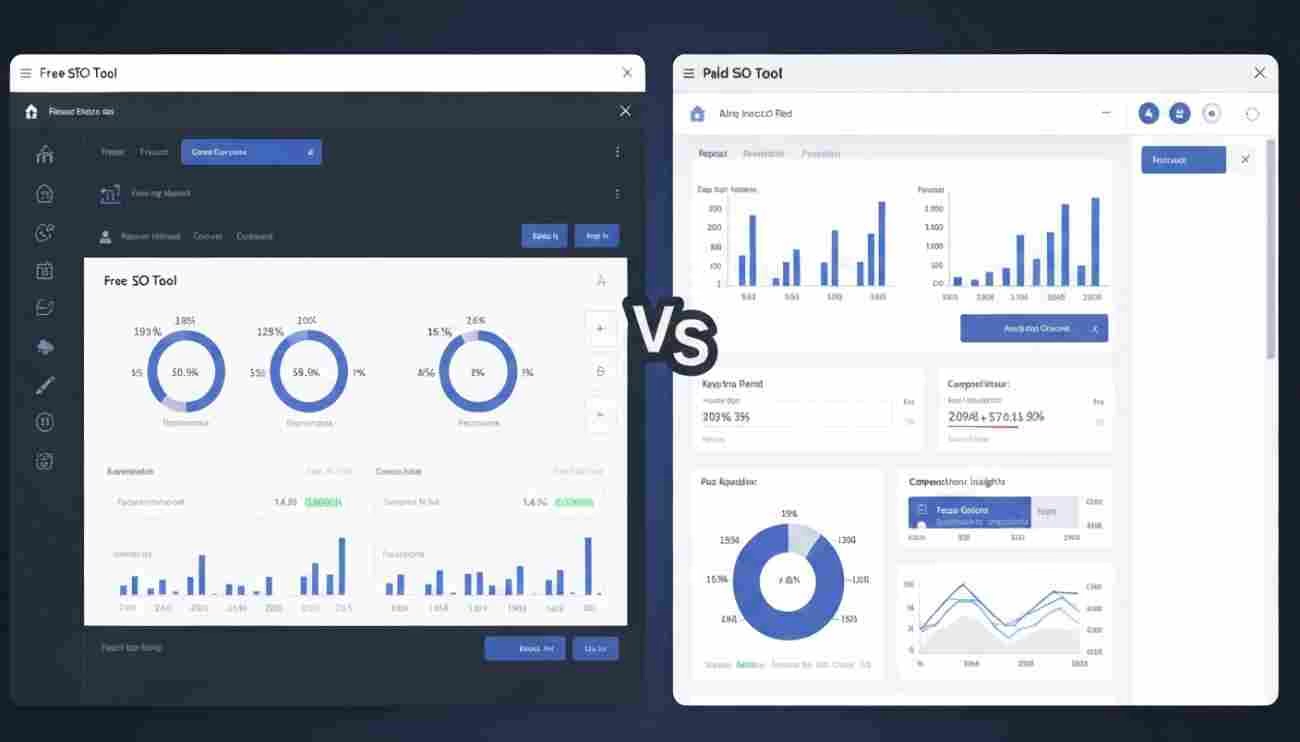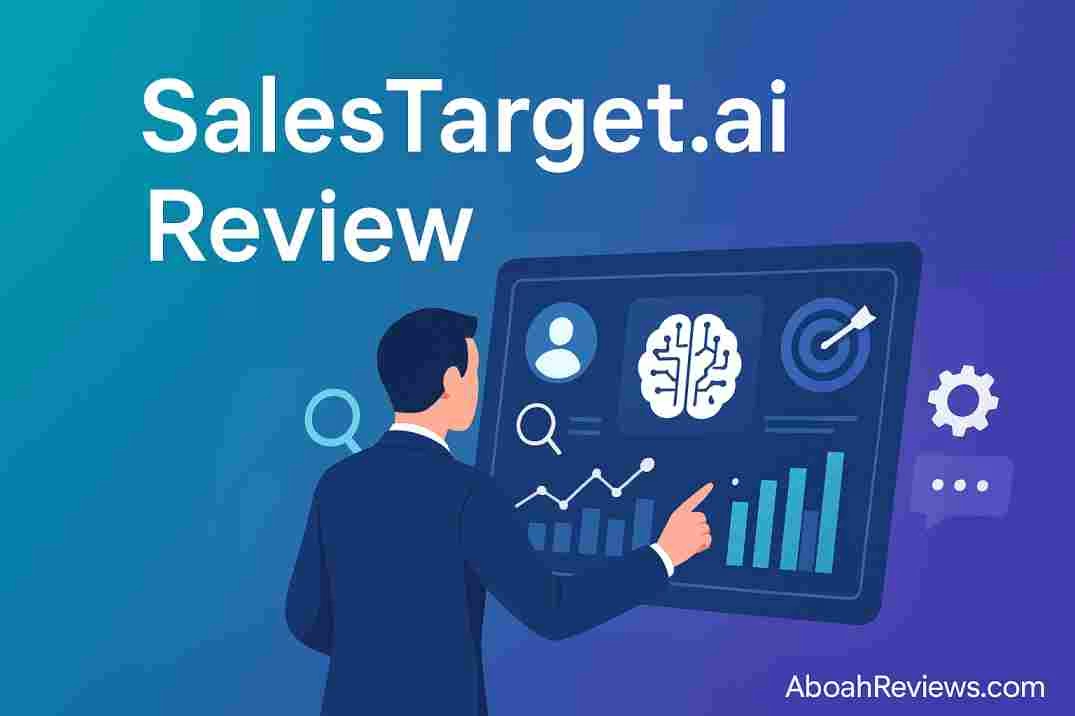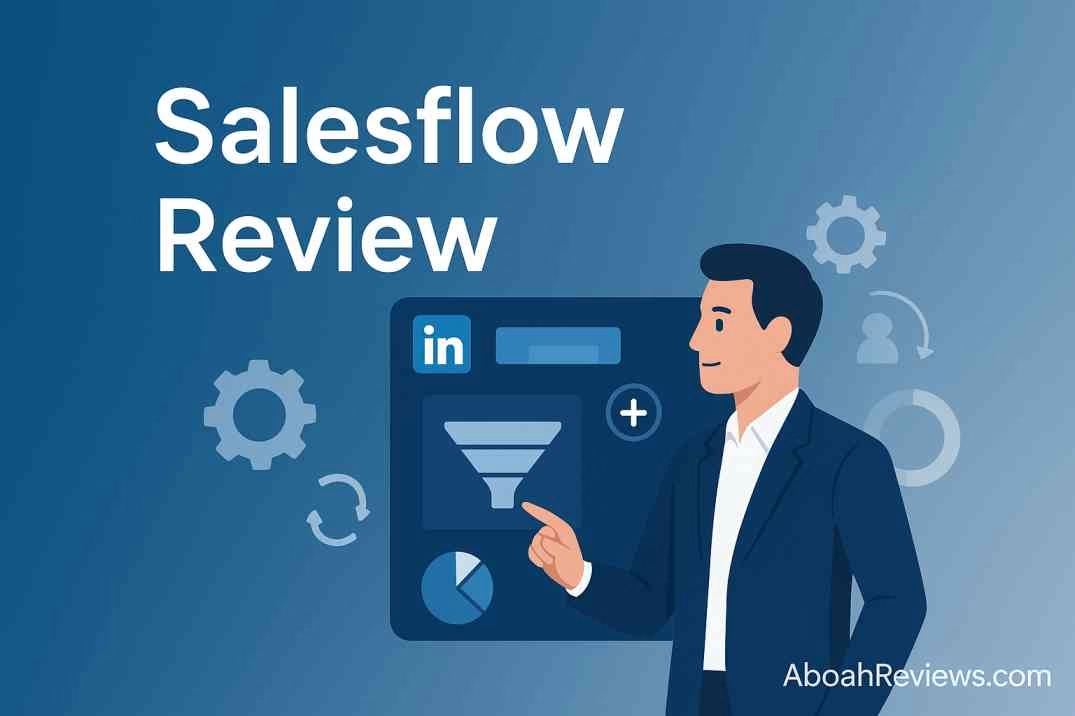Table Of Contents
- 1 Key Takeaways About Free vs Paid SEO Tools
- 2 Exploring Free vs Paid SEO Tools in 2025
- 3 Beginner’s Guide: Getting Started with Free vs Paid SEO Tools
- 4 Step-by-Step Guide to Choosing Between Free vs Paid SEO Tools
- 5 Top Free SEO Tools for Beginners and Small Businesses
- 6 Best Paid SEO Tools Recommended by Experts in 2025
- 7 Comparing Free vs Paid SEO Tools: Features and Results
- 8 Final Thoughts On Free vs Paid SEO Tools
- 9 Frequently Asked Questions About Free vs Paid SEO Tools
Free vs paid SEO tools: which one should you choose? Choosing the right search engine optimization (SEO) tools can feel overwhelming. With so many free and paid options available, how do you know which ones will actually deliver results and increase your organic traffic?
It’s tempting to stick with free SEO tools, but you might wonder if investing in a paid solution is the key to unlocking more website traffic.
This article will help you understand the differences between free vs paid SEO tools, so you can make the best decision for your website’s growth.
Key Takeaways About Free vs Paid SEO Tools
Here’s a quick look at what we’ll cover in this guide on free vs paid SEO tools:
- Free SEO tools are a great starting point for beginners and small businesses to learn the basics of search engine optimization.
- Paid SEO tools provide advanced features, deeper data, and competitor insights that are essential for scaling your website.
- The main difference between free and paid options lies in data accuracy, feature depth, and customer support.
- Your choice of SEO tool should depend on your specific goals, budget, and business complexity.
- A hybrid approach, combining the best free tools with targeted paid solutions, can maximize your results.
Exploring Free vs Paid SEO Tools in 2025

The world of free vs paid SEO tools is constantly changing. What started as basic keyword checkers has transformed into powerful platforms that analyze every aspect of your online presence.
Today, you have everything from simple browser extensions to advanced and AI-driven suites.
Understanding this change is the first step to choosing wisely. Whether you’re looking at free SEO tools to get started or considering paid SEO tools for more power, knowing what’s out there helps you align your choice with your goals for ranking on Google search.
Let’s look at why these tools are so important and how they’ve grown.
Why SEO Tools Matter for Websites and Businesses
Current day, having a strong online presence is non-negotiable for business owners. SEO tools are essential because they provide the data and insights you need to improve your website’s visibility in search engine results.
Without seo tools, you’re essentially guessing what works, which can be a huge risk when your organic traffic depends on it.
These tools help you understand how search engines see your site, identify opportunities for improvement, and track your performance over time.
From analyzing competitors to discovering new keywords, SEO tools guide your search engine optimization strategy. They help you make data-driven decisions that lead to a better user experience and more visitors.
Ultimately, SEO tools help you answer critical questions. Which keywords are driving traffic? Where are users dropping off? What technical issues are hurting your ranking?
While some basic tasks can be handled with free tools, more in-depth analysis often requires the advanced capabilities of paid options.
The Growth of SEO Tools: Key Statistics and Trends
The SEO tools market has grown significantly as more businesses recognize the importance of optimizing for search engines.
The evolution from simple keyword counters to AI-powered platforms shows how much the industry has matured. SEO strategies are now more complex, requiring tools that can keep up with changing search trends and algorithm updates.
This growth reflects a shift toward more data-centric content marketing. Businesses no longer just create content; they use SEO tools to ensure that content reaches the right audience and drives website traffic.
The reporting features have also become more advanced, with paid tools offering customizable dashboards and deeper insights that free versions can’t match.
The evolution of these tools continues to shape how we approach SEO.
| Feature Era | Typical Capabilities |
|---|---|
| Early Days (2000s) | Basic keyword density checkers, simple page rank monitors. |
| Mid-Tier (2010s) | Comprehensive keyword research, backlink analysis, basic site audits. |
| Modern Era (2020s) | AI-powered content optimization, real-time rank tracking, predictive analytics. |
Core Categories of SEO Tools: Technical, On-Page, Off-Page
To better understand search engine optimization, it’s helpful to break down SEO tools into three core categories. Each category addresses a different aspect of your website’s performance and involves specific SEO tasks.
- First is technical SEO, which focuses on the health of your website’s backend. Tools in this category help you find and fix issues like crawl errors, slow page speed, and duplicate content. Think of it as ensuring your site has a solid foundation for search engines to crawl and index effectively.
- Next, on-page SEO and off-page SEO tools help with the content and authority of your site.
- On-page tools analyze content, meta descriptions, and keyword usage, while off-page tools track backlinks and social media mentions.
- Technical SEO: Site crawlers, indexation checkers, and speed test tools.
- On-Page SEO: Content editors, keyword optimizers, and meta tag generators.
- Off-Page SEO: Backlink analysis tools and brand mention monitors.
Beginner’s Guide: Getting Started with Free vs Paid SEO Tools

Looking into the world of SEO can be exciting, but where do you start? The good news is that you don’t need a huge budget to begin improving your website’s performance.
Many of the best SEO tools offer free versions that provide valuable insights.
This guide will walk you through the essential accounts you need and help you understand the core differences between free vs paid SEO tools. By the end, you’ll have a clearer idea of how to choose the right path for your needs.
What You Need to Begin: Essential Resources and Accounts
Before you can start optimizing, you need to set up a few fundamental accounts. These resources are the building blocks of any successful SEO strategy and, best of all, they are completely free.
They provide a baseline for tracking your website traffic and understanding how your site appears in search results.
For any website owner, Google Search Console and Google Analytics are non-negotiable. Google Search Console is your direct line of communication with Google, offering insights into indexing issues and the keywords people use to find you. Google Analytics, on the other hand, tells you what visitors do once they arrive on your site.
Here are the essentials to get you started:
- Google Search Console: To monitor your site’s health and performance in Google search.
- Google Analytics: To track user behavior and website traffic sources.
- A WordPress SEO Plugin: Tools like Yoast SEO or Rank Math help with on-page optimization directly within WordPress.
- A Free Trial: Many paid tools offer a free trial, which is a great way to test advanced features without commitment.
Understanding Tool Selection: Free vs Paid SEO Tools Options’
Once you have the basics covered, you’ll face the choice between sticking with a free version or upgrading to a paid option.
The main differences come down to the depth of data, the range of features, and the level of support you receive. Free tools are excellent for learning and handling fundamental tasks.
A paid option, however, unlocks premium features that can give you a significant competitive edge. These tools offer more comprehensive data, such as detailed competitor analysis, historical keyword trends, and extensive backlink profiles.
They often provide better reporting and customization options, allowing you to tailor the insights to your specific goals.
Consider these key differences when making your decision:
- Data Limits: Free versions often limit the amount of data you can access, such as the number of keywords you can track or reports you can run.
- Advanced Features: Paid tools provide advanced capabilities like content optimization guidance, automated site audits, and real-time rank tracking.
- Support: Paid subscriptions usually come with dedicated customer support, which can be a lifesaver when you run into issues.
Step-by-Step Guide to Choosing Between Free vs Paid SEO Tools
Choosing the right SEO tool doesn’t have to be complicated. By following a clear, step-by-step process, you can select a tool that aligns with your SEO goals and helps you implement best practices.
This approach ensures you don’t pay for features you don’t need or miss out on capabilities that could transform your SEO strategies.
This guide will walk you through defining your needs, assessing your budget, and testing different options. Following these steps will help you confidently choose tools that improve your visibility in search results.
Step 1: Define Your Goals and SEO Needs
The first and most important step is to clearly define your SEO goals. Are you just starting and want to learn the basics of search engine optimization? Or are you looking to scale your organic traffic and outperform your competitors in a crowded market?
Your answer will significantly influence the type of tool you need.
If your primary goal is to improve your website’s performance by fixing basic on-page issues and tracking a handful of keywords, a set of free tools will likely be sufficient. They can help you get started with optimizing content and monitoring initial progress without any financial investment.
However, if your goals are more ambitious, such as conducting in-depth competitor analysis, building a large-scale link-building campaign, or managing SEO for multiple clients, you will need the advanced functionality of paid tools.
These tools provide the deeper insights necessary to develop and execute complex strategies.
Step 2: Assess Your Budget and Business Complexity
Your budget and the complexity of your business are critical factors in your decision.
For small businesses, freelancers, or new business owners, starting with free tools is a practical and cost-effective approach. They allow you to handle essential SEO tasks without the pressure of a monthly subscription.
As your business grows, your SEO needs will become more complex. You might find that the limitations of free tools are holding you back. This is the point when it’s worth upgrading to paid SEO tools.
An investment in a paid tool can provide a significant return by saving you time and offering data that leads to smarter decisions and faster growth.
Consider the time you spend on manual SEO tasks. If a paid tool can automate those processes and provide more actionable insights, it often justifies the cost. The key is to upgrade when you’re ready to move beyond the basics and compete at a higher level.
Step 3: Try Top Free SEO Tools First
Before you open your wallet, it’s wise to explore what the best free SEO tools have to offer.
For many, these tools can deliver reliable results and provide a solid foundation for any digital marketing strategy. They are perfect for understanding your site’s baseline performance and identifying low-hanging fruit.
Start by getting comfortable with Google Search Console and Google Analytics. These two platforms are indispensable for monitoring your site’s health and traffic.
They give you real-time data directly from the source, helping you understand how users find and interact with your website without costing a penny.
In addition to Google’s offerings, several other free tools can help you get started.
- Google Search Console: Track your site’s indexing status and see which queries drive clicks.
- Google Analytics 4: Analyze user behavior, traffic sources, and conversion rates.
- AIOSEO (Free Version): Optimize your titles, meta descriptions, and on-page elements directly in WordPress.
- Ubersuggest (Free Version): Get initial keyword ideas and basic competitor data.
Step 4: Explore Paid SEO Tools for Advanced Features
When you’re ready to take your SEO to the next level, it’s time to explore paid SEO tools. These platforms are designed to provide the advanced features and deeper insights that free tools lack.
They are investments that can accelerate your growth by providing a clear competitive advantage.
One of the biggest benefits of paid tools is comprehensive competitor analysis. You can uncover your competitors’ top keywords, backlink strategies, and best-performing content, allowing you to reverse-engineer their success. This level of intelligence is nearly impossible to get from free sources.
Here are some advanced features that make paid tools worth considering:
- In-Depth Keyword Research: Access precise search volumes, keyword difficulty scores, and historical trend data.
- Extensive Backlink Audits: Analyze your complete backlink profile and discover new link-building opportunities.
- AI-Powered Content Optimization: Get real-time suggestions to improve your content based on top-ranking pages.
Top Free SEO Tools for Beginners and Small Businesses

If you’re a beginner or running a small business, you don’t need to spend a fortune to improve your SEO. There are many excellent free SEO tools that can help you increase website traffic and track your keyword rankings without any cost.
These tools provide the essential functionality needed to get started with optimization. From monitoring your site’s health to researching keywords, this lineup of free resources is the perfect starting point for anyone looking to grow their online presence on a budget.
1. Google Search Console: Site Visibility and Health
Google Search Console (GSC) is arguably the most important free SEO tool for any website owner. It’s your direct link to Google, providing invaluable feedback on your site’s performance and health.
Think of it as a dashboard that shows you exactly how Google sees your website.
With GSC, you can monitor your site’s indexing status to ensure your pages are visible in search results. It alerts you to crawl errors, security issues, and manual actions that could be hurting your organic traffic.
You can also see the exact search queries that are bringing visitors to your site, which is crucial for refining your content strategy.
Understanding and using the data in Google Search Console is fundamental to SEO. It helps you diagnose technical problems, track your visibility, and make informed decisions to improve your site’s performance without spending a dime.
2. Google Analytics 4: Tracking Traffic and User Behavior
While Google Search Console shows you how people find your site, Google Analytics 4 (GA4) tells you what they do once they get there.
This powerful free tool is essential for understanding user behavior and measuring the effectiveness of your SEO efforts. The data it provides is highly accurate because it comes directly from your website traffic.
GA4 offers valuable insights into key metrics like where your traffic is coming from, which pages are most popular, and how long users stay on your site. You can track conversions, analyze user journeys, and identify points where visitors might be dropping off.
This information helps you optimize your content and user experience to better meet audience needs.
By linking Google Analytics with Google Search Console, you can create a comprehensive view of your entire customer journey, from search query to conversion. This synergy makes it one of the most powerful free resources available for data-driven marketing.
3. Google Keyword Planner & Answer The Public: Keyword Research Tools
Effective keyword research is the foundation of a strong SEO strategy, and there are great free tools to help you get started.
Google Keyword Planner, while designed for advertisers, is a useful resource for finding new keywords and getting a general idea of their search volume. It’s a solid starting point for brainstorming.
For generating content ideas, Answer The Public is another fantastic free tool. It visualizes search questions and related search terms around a keyword, helping you understand user intent. This allows you to create content that directly addresses the questions your audience is asking, which is great for on-page SEO.
While these tools are great for initial research, their reporting features are limited compared to paid options.
- Google Keyword Planner: Provides search volume ranges and keyword suggestions.
- Answer The Public: Offers questions, prepositions, and comparisons related to your keyword.
- Limitations: Free tools often lack the detailed competition scores and trend data found in paid keyword research tools.
4. Browser Extensions and Other Free SEO Optimization Tools
Beyond standalone platforms, some of the most convenient free SEO tools come in the form of browser extensions and WordPress plugins.
These tools integrate directly into your workflow, making it easy to perform quick SEO checks and optimizations without switching between different tabs or applications.
For WordPress users, plugins like Yoast SEO and Rank Math are essential. They provide real-time feedback on your on-page SEO as you write, helping you optimize titles, meta descriptions, and keyword usage.
They also simplify technical tasks like creating XML sitemaps. For small businesses, a powerful WordPress plugin can handle many of the on-page SEO tasks that might otherwise require a paid tool.
Browser extensions offer on-the-fly analysis of any webpage.
- SEOquake: Provides key SEO metrics for any page directly in your browser.
- MozBar: Offers instant metrics on page authority and domain authority.
- Yoast SEO: A comprehensive WordPress plugin for on-page and technical SEO.
- Rank Math: An alternative WordPress plugin with a strong set of free features.
Best Paid SEO Tools Recommended by Experts in 2025

When you’re ready to invest in your SEO success, paid SEO tools offer the advanced features and competitor insights that can give you a serious edge.
These premium tools are recommended by experts because they provide comprehensive data and powerful analytics that go far beyond what free options can offer.
From all-in-one suites to specialized platforms, these tools are designed to help you build and execute a winning SEO strategy. Let’s explore some of the top paid tools that professionals rely on to drive results.
1. Semrush, Ahrefs, Moz Pro: All-in-One SEO Solutions
When it comes to comprehensive, all-in-one SEO platforms, three names consistently stand out: Semrush, Ahrefs, and Moz Pro.
These tools are the powerhouses of the SEO world, offering a complete suite of features for keyword research, site audits, rank tracking, and competitor analysis.
- Semrush is often praised for its robust keyword research and competitor intelligence capabilities, making it a favorite among content marketers.
- Ahrefs is renowned for having one of the largest and most accurate backlink databases, which is invaluable for off-page SEO and link-building campaigns.
- Moz Pro is known for its user-friendly interface and strong educational resources, making it a great choice for those who want powerful tools that are easy to learn.
Investing in one of these platforms is like having an entire SEO team at your fingertips. They provide the deep SEO insights needed to manage large-scale campaigns and stay ahead of the competition.
2. Surfer SEO & Screaming Frog: Specialized SEO Analysis Tools
While all-in-one suites are powerful, sometimes you need a tool that specializes in a specific area of SEO.
- Surfer SEO and Screaming Frog are two such technical SEO tools that excel in their respective domains. They are perfect for diving deep into content optimization and technical site health.
- Screaming Frog SEO Spider is a desktop-based website crawler that provides a thorough analysis of your website’s technical SEO. It can crawl thousands of pages to find issues like broken links, duplicate content, and redirect errors. This tool is essential for conducting in-depth technical audits to improve your website’s performance.
Content optimization tools like Surfer SEO, on the other hand, help you write content that is perfectly tuned to rank for your target keywords. It analyzes top-ranking pages and provides real-time guidance on keyword usage, content structure, and readability, ensuring your content is poised for success from the start.
Unique Features and Reporting Offered by Paid Tools
One of the most significant advantages of paid SEO tools is the depth and quality of their features and reporting.
While free tools provide basic data, paid platforms offer advanced features that provide deeper insights and a clear path to action. This is where you truly see the return on your investment.
Paid tools offer robust reporting features that are highly customizable. You can create white-label reports for clients, track historical performance over months or years, and set up automated alerts for significant changes in rankings or site health.
This level of detail and automation saves time and helps you prove the value of your SEO efforts.
Here are some unique features that set paid tools apart:
- Historical Data: Track keyword rankings and competitor performance over time to identify long-term trends.
- Keyword Gap Analysis: Find valuable keywords your competitors are ranking for, but you are not.
- Advanced Site Audits: Receive prioritized lists of technical issues with clear instructions on how to fix them.
Comparing Free vs Paid SEO Tools: Features and Results
So, what delivers better results: free SEO tools or paid SEO tools? The truth is, it depends on your goals and resources. Both have their place in a well-rounded search engine optimization strategy, but they differ significantly in their capabilities and the real results they can help you achieve.
This comparison will break down the differences in data accuracy, reporting, and the types of tasks each is best suited for.
Understanding these distinctions will help you decide where to allocate your time and budget for the best possible return on your SEO metrics.
1. Data Accuracy and Reporting Capabilities
When it comes to data accuracy, there is a noticeable difference between free tools and a paid option.
While free tools like Google Analytics provide accurate traffic data, other free resources may use smaller databases or less frequent updates, which can lead to less precise SEO metrics for things like keyword volume or backlink counts.
Paid tools invest heavily in their data infrastructure, crawling the web constantly to maintain massive, up-to-date databases. This results in more reliable data that you can trust to make strategic decisions. Whether it’s keyword difficulty scores or competitor backlink profiles, the data from a paid tool is generally more accurate and comprehensive.
The disparity is also clear in their reporting features. Free tools typically offer basic, standard reports.
Paid platforms, in contrast, provide advanced, customizable reporting dashboards that allow you to track the exact metrics that matter most to your business and present them in a professional, easy-to-understand format.
2. Which SEO Tasks Need Paid Tools and Which Can Be Handled Free?
Not all SEO tasks require a paid subscription. Many fundamental activities can be effectively managed with the free version of a tool or a combination of free resources.
Knowing which tasks fall into which category can help you build a cost-effective and powerful SEO toolkit.
Basic on-page SEO, initial keyword analysis, and performance monitoring are all tasks that can be handled well with free tools.
For instance, you can use a WordPress plugin to optimize your content and Google Search Console to track your rankings for a limited set of keywords. These are perfect for getting started and maintaining a small website.
However, a paid option becomes necessary for more advanced and scalable SEO tasks.
- Free Tools Are Great For: Basic on-page optimization, tracking site health, and monitoring traffic for a single site.
- Paid Tools Are Needed For: In-depth competitor analysis, large-scale technical SEO audits, comprehensive backlink building campaigns, and managing multiple client websites.
Final Thoughts On Free vs Paid SEO Tools
With a new change in search engine optimization, selecting between free and paid SEO tools can profoundly influence a website’s effectiveness and the direction of a digital marketing strategy.
Free seo tools provide an accessible, budget-friendly starting point and grant access to essential SEO functionalities, whereas paid solutions offer more advanced features, comprehensive insights, and enhanced data precision that can yield substantial results.
For entrepreneurs and small businesses looking to strengthen their digital visibility, the optimal tool hinges on their unique SEO objectives and available financial resources.
As the SEO industry continues to shift, recognizing the strengths and shortcomings of both types of tools remains vital. Ultimately, making a well-informed choice enables users to optimize content strategies, boost their rankings, and achieve steady growth in organic site traffic.
Frequently Asked Questions About Free vs Paid SEO Tools
1. Are there free SEO tools that can deliver reliable results?
Yes, absolutely. Free SEO tools like Google Search Console and Google Analytics provide highly reliable data because they come directly from Google. They are excellent for tracking your organic traffic, monitoring site health, and understanding user behavior. Many paid tools also offer a free trial to test their accuracy.
2. Is it possible to achieve good SEO outcomes using only free tools?
It is possible to achieve good SEO outcomes with free tools, especially for smaller websites or those in less competitive niches. By strategically using a combination of free tools, you can improve your website traffic and user experience. However, competing at a high level often requires more advanced data.
3. When should you consider upgrading to paid SEO tools?
Business owners should consider upgrading to paid SEO tools when their SEO needs become more complex. If you need deeper competitor insights, want to manage large-scale campaigns, or find that the limitations of free tools are slowing your growth, it’s time to invest in premium and advanced features.
4. Are paid SEO tools worth the investment for beginners?
For most beginners and small businesses, it’s best to start with free tools to learn the basics. However, if you are serious about growing quickly, paid SEO tools can be a worthwhile investment. They provide deeper insights, better customer support, and help you build more effective SEO strategies from the start.
About The Author
Aboah Okyere is an SEO Specialist, SaaS reviewer and founder of AboahReviews.com, where he tests and compares SEO and digital marketing software. With years of hands-on experience using tools like Semrush, Surfer SEO, and Ahrefs, he’s helped multiple clients achieve top Google rankings and consistent traffic growth.
Over the past four years, he has reviewed more than 50 tools including Screpy, SEOptimizer, Screaming Frog, and SE Ranking. His analyses focus on affordability, accuracy, and user experience for small businesses and content professionals.



